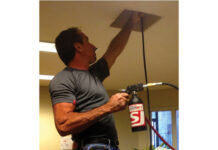Investing in a good water filtration for your home is one of the best big buys you’re going to make, all in the name of good health.
The body doesn’t just need water for it to function; it needs clean, safe, and potable water. In the long run, the return on investment on your water filters may also show it winds up as a more cost-effective option compared to bottled water.
No matter what type of water filtration system you have at home, getting the most out of it entails learning to keep your filtration unit well-maintained. It may sound technical, but for the most part, it’s something most homeowners can successfully do.
Look at www.filtap.com.au and other websites to learn more, and then proceed below. This read will guide you. Continue on below.
Change The Filters Regularly
If you have air purifiers at home, you’d know by now that you must also change the filters at least once every six months. Observe the same timeframe for your water filtration system. Over time, those filters are bound to get extremely dirty no matter how well you’ve cleaned them. And that situation already calls for a replacement.
This six-month timeframe, nonetheless, isn’t absolute. Water filters with a reverse osmosis filtration system will, for instance, need to have the membrane replaced once every two years. Here’s a basic guide on some of the most common filters to replace:
- Pre-filter: This is located right before the membrane, used to remove sediments like dirt, sand and rust. To prevent the pre-filters from getting clogged, replace this at least once every six to nine months.
- Carbon filter: This is responsible for cleaning the water from substances that make it taste or smell bad, like chlorine. Change the carbon filter every six to twelve months.
- Reverse osmosis membrane: As briefly discussed, the replacement schedule is once every two to three years. This is the part that removes most contaminants like water-borne pathogens and fluoride And this emphasizes, even more, the importance of having a reverse osmosis system installed in your house to get rid of all contaminants found in your water.
- Carbon filter: Most water filtration systems are equipped with this added filter to polish the water and improve its taste even more. Like most filters, this needs replacing every six to twelve months.
It’s still best to check what your manufacturer’s instructions are so that you can observe that.
Set A Regular Cleaning Routine
As you do with all other parts and equipment in your home, set a regular cleaning routine for your water filtration system. This is a proactive measure, which rounds up to be better, rather than waiting it out until later when there’s already a noticeable build-up of minerals, limescale, debris, and pollutants.
When cleaning, be as gentle as you can. Remember, the filter’s parts get into the water you’ll be drinking. You’ll want to avoid using cleaning products laden with harsh chemicals. Moreover, abrasives shouldn’t be used, as those could damage the filtration system’s delicate parts.
A better approach instead is to rinse the system gently with mild water. Sanitize all the small parts and sections you can easily forget, such as the line cap assembly and water dispenser.
Schedule Regular Professional Inspections
Regular professional inspections form the foundation of good-functioning water filtration systems the whole year. Because they’re experts at this, they’re more equipped to diagnose problems before they escalate into bigger ones. They could spot problems with your water filtration system which you couldn’t see as well.
Call the experts immediately if you suspect any problem with your water filtration system. Don’t put off this job for later. Signs like strange noises when running your water or a weird taste are the top two signs of a problem.
Don’t try to troubleshoot yourself something you’re not convinced on being able to do; otherwise, you risk making the problem even worse than it already is. Letting the experts deal with this problem ensures they’re doing the job correctly and in the most efficient and safest way possible.
Consider Installing A Water Softener With It
Water-hardening materials like magnesium and calcium are tough on water filtration membranes. You can ‘help’ your water filters by installing water softeners, as most of those work very well with water filters and water purification systems.
Water softeners can help extend your water filter’s life while having that added layer of protection from taking in large quantities of calcium and magnesium through your water.
The Bottomline
You’ve made an excellent choice of investing in a water filtration system in your home. This brings many advantages, but it also means added maintenance work on your part. Without cleaning the filter, it’ll be less effective at removing contaminants from your water.
As the tips above would show, maintaining your home’s water filtration system can easily be a routine thing. Most importantly, you could potentially increase its lifespan by being a responsible homeowner that gives it the upkeep and maintenance it needs.











